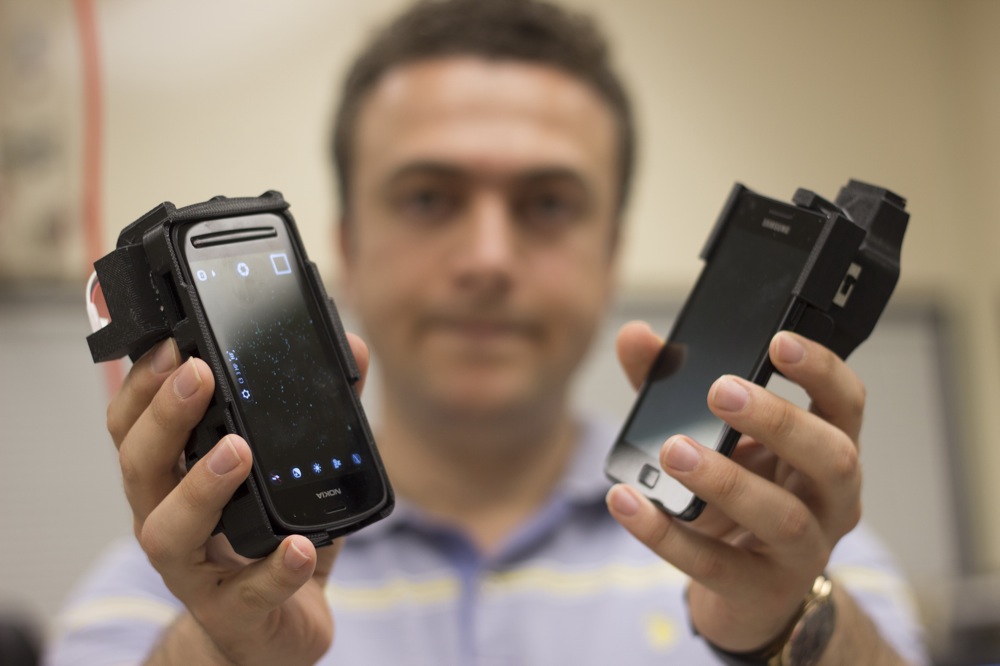UCLA team invents microscope attachment for cell phones

Aydogan Ozcan, a professor of electrical engineering and bioengineering, helped create a microscope that can be attached to a cell phone to take images of single viruses.
By Chandini Soni
Sept. 27, 2013 1:32 a.m.
Between calling, texting and updating social media, people will soon be able to use their cell phones as a microscope powerful enough to detect viruses.
Aydogan Ozcan, a professor of electrical engineering and bioengineering, headed a team that recently invented a microscope that can be attached to a cell phone to take images of single viruses.
Ozcan said that one day, he hopes it will be able to help people diagnose diseases despite not having access to a lab.
The technology marks the first time viruses can viewed on a cell phone, Ozcan said.
The device can be used to see any kind of viruses, even those such as HIV and human cytomegalovirus, which causes birth defects including deafness and brain damage, he said.
“It brings in a very advanced microscope that can see viruses and particles to a field–portable design,” Ozcan said.
Ozcan said he persued the idea of creating the attachment because he saw that it was needed and could have a positive impact on society.
The device weighs about 200 grams, about as much as a bar of soap and clamps onto the back of a cell phone, he said.
A sample is inserted into the microscope on a slide or a thin piece of glass. The microscope will use the cell phone’s camera to capture the image and then run it through a program to produce a magnified image.
Without the device, people would have to take samples and ship them to a central lab in order to diagnose diseases. The lab would then have to relay the final results to the patients, he said.
The new attachment will allow users in remote areas to utilize some of these advanced tests that would normally require a lab, Ozcan said.
Ozcan said the device may have other implications for nanoscience research.
Dean Ho, a professor at the UCLA School of Dentistry and co-director of the Jane and Jerry Weintraub Center for Reconstructive Biotechnology, said the microscope could help in his research on cancer medication.
Ho studies nanodiamonds, minute particles of diamonds, and their application to reduce the toxicity of brain cancer drugs.
Using Ozcan’s technology, Ho said he could potentially image patients’ blood faster.
While there are challenges of working in a new field, Ho said he thinks the microscope is a great opportunity to expand nanotechnological research.
Qingshan Wei, a postdoctoral scholar who worked on the project said he enjoyed the process because he could foresee the potential application of the device.
“(The part I enjoyed most was) the part where you have to innovate to implement the microscope on a cell phone,” said Wei. “You have no reference or previous experience to use. You have to create something new.”
Eventually, Ozcan said he hopes to license the technology in such a way that everyone will be able to afford it.

